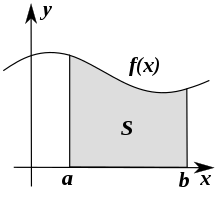Type a search term to find related articles by LIMS subject matter experts gathered from the most trusted and dynamic collaboration tools in the laboratory informatics industry.


In mathematics, a functional is a certain type of function. The exact definition of the term varies depending on the subfield (and sometimes even the author).
This article is mainly concerned with the second concept, which arose in the early 18th century as part of the calculus of variations. The first concept, which is more modern and abstract, is discussed in detail in a separate article, under the name linear form. The third concept is detailed in the computer science article on higher-order functions.
In the case where the space is a space of functions, the functional is a "function of a function",[6] and some older authors actually define the term "functional" to mean "function of a function". However, the fact that is a space of functions is not mathematically essential, so this older definition is no longer prevalent.[citation needed]
The term originates from the calculus of variations, where one searches for a function that minimizes (or maximizes) a given functional. A particularly important application in physics is search for a state of a system that minimizes (or maximizes) the action, or in other words the time integral of the Lagrangian.
The mapping is a function, where is an argument of a function At the same time, the mapping of a function to the value of the function at a point is a functional; here, is a parameter.
Provided that is a linear function from a vector space to the underlying scalar field, the above linear maps are dual to each other, and in functional analysis both are called linear functionals.
Integrals such as form a special class of functionals. They map a function into a real number, provided that is real-valued. Examples include
Given an inner product space and a fixed vector the map defined by is a linear functional on The set of vectors such that is zero is a vector subspace of called the null space or kernel of the functional, or the orthogonal complement of denoted
For example, taking the inner product with a fixed function defines a (linear) functional on the Hilbert space of square integrable functions on
If a functional's value can be computed for small segments of the input curve and then summed to find the total value, the functional is called local. Otherwise it is called non-local. For example: is local while is non-local. This occurs commonly when integrals occur separately in the numerator and denominator of an equation such as in calculations of center of mass.
The traditional usage also applies when one talks about a functional equation, meaning an equation between functionals: an equation between functionals can be read as an 'equation to solve', with solutions being themselves functions. In such equations there may be several sets of variable unknowns, like when it is said that an additive map is one satisfying Cauchy's functional equation:
Functional derivatives are used in Lagrangian mechanics. They are derivatives of functionals; that is, they carry information on how a functional changes when the input function changes by a small amount.
Richard Feynman used functional integrals as the central idea in his sum over the histories formulation of quantum mechanics. This usage implies an integral taken over some function space.